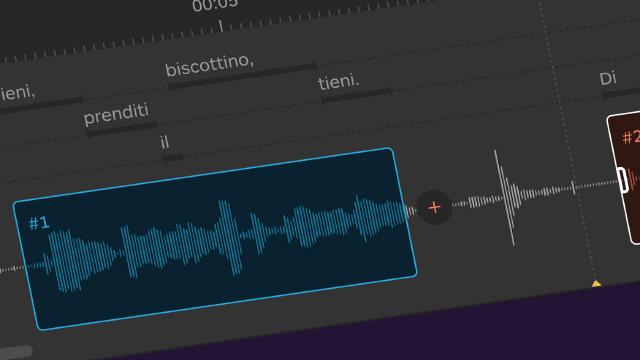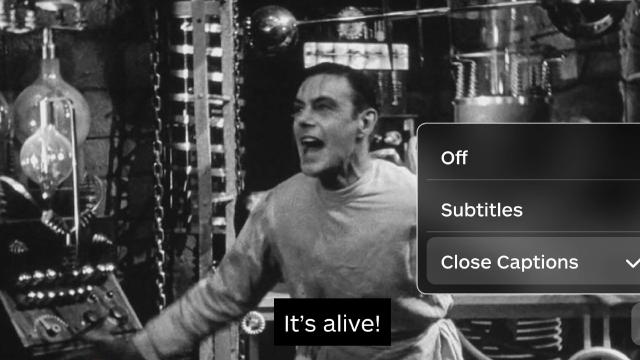Subtitles are vital for making audiovisual content accessible to diverse audiences, and among the various types of subtitles, SDH (Subtitles for the Deaf and Hard of Hearing) are particularly important. This type of subtitle is designed to offer a comprehensive viewing experience for individuals who are deaf or hard of hearing, ensuring they can fully access and understand audiovisual content. In this article, we will explore the concept of SDH, their features, and their significance in creating inclusive media.
## What are SDH Subtitles
SDH subtitles, also known as “Subtitles for the Deaf and Hard of Hearing”, are a specialized type of subtitles designed to make audiovisual content more accessible to individuals who are deaf or hard of hearing. They not only transcribe dialogue but also describe relevant non-verbal audio elements such as sound effects, music, speaker identification, and other auditory cues. This additional information is essential for individuals who are unable to fully perceive or understand the audio content.
Features of SDH subtitles
Dialogue Transcription: SDH subtitles provide a written representation of the spoken dialogue in the video or film. This transcription allows viewers to read and understand the conversation, even if they cannot hear it.
Sound Effect Descriptions: SDH subtitles incorporate descriptions of sound effects to provide a more immersive experience. These descriptions can include information about background noises, environmental sounds, or any audio cues that contribute to the understanding of the scene.
Music and Lyrics Representation: When there is music playing in a video or film, SDH subtitles include descriptions of the genre, artist, and lyrics, if applicable. This helps individuals with hearing impairments enjoy the musical aspect of the content.
Speaker Identification: SDH subtitles indicate the identity of the speaker when there are multiple characters involved in a conversation. This feature helps viewers understand who is speaking, improving clarity and comprehension.
An example of SDH subtitles in srt format:
1
00:00:00,000 --> 00:00:02,000
[Soft instrumental music playing]
2
00:00:03,000 --> 00:00:05,500
Speaker 1: Welcome, everyone, to our nature walk.
3
00:00:06,000 --> 00:00:08,500
Speaker 2: [Excited] Look at those colorful butterflies!
4
00:00:09,000 --> 00:00:11,500
[Sound of flowing river in the background]
5
00:00:12,000 --> 00:00:15,000
Speaker 3: [Signs] Isn't this place peaceful?
6
00:00:15,500 --> 00:00:18,000
[Children laughing]
7
00:00:19,000 --> 00:00:21,500
[Speaker 1 smiles warmly]
Importance of SDH Subtitles
Accessibility: SDH subtitles are a critical accessibility tool, providing individuals who are deaf or hard of hearing with access to audiovisual content that would otherwise be inaccessible to them. By incorporating SDH subtitles, content creators ensure their work reaches a broader audience.
Inclusive Viewing Experience: SDH subtitles create an inclusive viewing experience by bridging the communication gap for individuals with hearing impairments. They empower viewers to enjoy movies, TV shows, educational videos, and other audiovisual content on an equal footing with their hearing counterparts.
Language Enhancement: SDH subtitles are not only beneficial for individuals with hearing impairments but also for non-native speakers, people with auditory processing disorders, and those watching content in noisy environments. They enhance language acquisition and comprehension by presenting both the spoken and written forms simultaneously.
SDH Standards: Ensuring Accessibility Worldwide
Various countries and regions have developed their own standards and regulations to enhance the accessibility of audiovisual content through SDH. Here are a few notable examples:
United States Standards In the United States, the Federal Communications Commission (FCC) plays a pivotal role in shaping the standards for SDH and closed captioning. Under Title 47 of the Code of Federal Regulations (47 C.F.R. Part 79), the FCC has established regulations that govern closed captioning, including the provision of SDH. These regulations are designed to ensure the accuracy, timing, and completeness of captions, making televised content accessible to individuals who are deaf or hard of hearing. Compliance with FCC standards is crucial for broadcasters and content creators in the United States to ensure accessibility for a diverse audience.
United Kingdom (Ofcom) Ofcom, the communications regulator in the United Kingdom, provides guidelines and requirements for subtitles and access services in broadcasting. These guidelines outline the quality, timing, and accuracy standards that broadcasters and content providers must adhere to, ensuring that individuals with hearing impairments have access to high-quality SDH.
Canada (CRTC) In Canada, the Canadian Radio-television and Telecommunications Commission (CRTC) has established regulations related to closed captioning, which include standards for quality and accuracy. Broadcasters in Canada must meet these regulatory requirements to provide accessible content to their viewers.
European Union (EU) Within the European Union, directives and regulations seek to improve accessibility in media services, including SDH. The European Accessibility Act and the Web Accessibility Directive are significant initiatives that aim to harmonize accessibility standards across EU member states, enhancing the availability of subtitles and access services.
Australia (ACMA) Australia’s regulatory body, the Australian Communications and Media Authority (ACMA), offers guidelines and requirements for closed captioning. These guidelines ensure that content providers and broadcasters in Australia maintain high standards of accessibility through subtitles.
International Standards (ISO) The International Organization for Standardization (ISO) has also contributed to the development of accessibility standards related to subtitles and captions, providing crucial guidelines for the subtitling process.
In an increasingly interconnected world, these standards and regulations collectively contribute to the creation of accessible and inclusive audiovisual content. Content creators, broadcasters, and streaming platforms worldwide are urged to adhere to relevant standards and regulations to ensure that SDH content meets accessibility requirements and provides an enriching viewing experience for individuals who are deaf or hard of hearing.
Conclusion
SDH subtitles play a vital role in creating an inclusive and accessible media landscape. By providing a comprehensive representation of audio elements, they enable individuals who are deaf or hard of hearing to fully engage with audiovisual content. Moreover, SDH subtitles benefit a wider audience, including non-native speakers and those in noisy environments. It is essential for content creators, subtitlers, and translators to prioritize the inclusion of SDH subtitles in their work, ensuring that everyone can enjoy the power of audiovisual storytelling without barriers.
Ready to make your content more accessible?
Try Matesub for free and unlock the power of inclusive media today!





